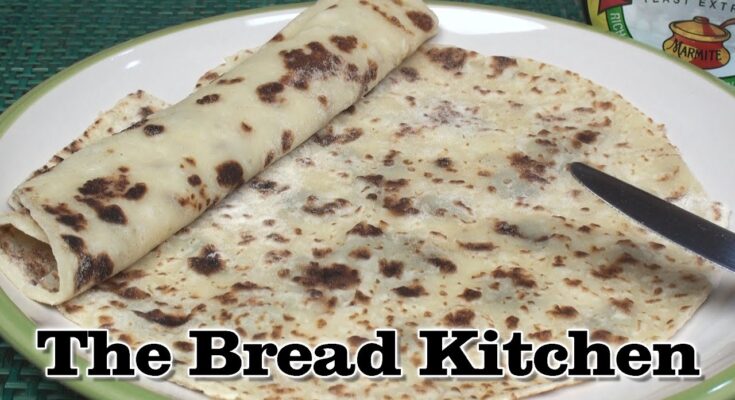Lefse Recipe: Nothing says comfort like the soft, warm, and slightly sweet taste of freshly made lefse. Whether you’re diving into your Norwegian roots or simply looking for a fun cooking project, this guide will walk you through every detail you need to master this classic flatbread.
What is Lefse?
Lefse is a traditional Norwegian flatbread that resembles a tortilla but is made primarily from potatoes. It’s typically cooked on a large, flat griddle and served during holidays like Christmas or other special family gatherings. Although it’s a simple dish, making lefse carries rich traditions, often passed down through generations.
The Origin and Tradition of Lefse
Lefse dates back to the 18th century in Norway when people needed a way to preserve their crops for the harsh winters. Potatoes became a staple, and lefse was born as a delicious way to stretch the potato harvest. Today, lefse making is a beloved tradition among Norwegian-American communities, often becoming a multi-generational event during the holiday season.
Ingredients You’ll Need
Before we dive into the cooking process, let’s gather everything you need to make authentic lefse.
Essential Ingredients for Traditional Lefse
- 4 cups riced potatoes (about 6-7 medium potatoes)
- 1/4 cup unsalted butter
- 1/4 cup heavy cream
- 1 tablespoon sugar
- 1 teaspoon salt
- 1 to 1 1/2 cups all-purpose flour
These basic ingredients are all you need to create the tender, slightly sweet lefse that melts in your mouth.
Optional Ingredients and Variations
Some families add a bit more sugar for a sweeter version, while others might incorporate a pinch of cardamom for a spicy twist. You can even experiment with different flours, such as whole wheat or gluten-free options.
Tools You Need for Making Lefse
To make lefse the traditional way, a few special tools will come in handy. Don’t worry—I’ll also suggest some common kitchen alternatives.
Traditional Tools
- Lefse griddle: A large, round flat griddle without sides.
- Lefse stick: A thin wooden stick for flipping the delicate dough.
- Lefse rolling pin: A special pin with deep grooves to keep the dough from sticking.
Modern Alternatives
If you don’t have traditional lefse equipment:
- Use a large flat skillet or electric griddle.
- A standard rolling pin dusted heavily with flour works too.
- A thin spatula can replace the lefse stick in a pinch.
Step-by-Step Instructions for Making Lefse
Ready to get your hands floury? Follow these detailed steps to create beautiful, delicious lefse.
Step 1: Preparing the Potato Dough
Start by peeling and boiling your potatoes until tender. Rice the hot potatoes immediately for the smoothest texture (a potato ricer is ideal). Add butter, cream, sugar, and salt to the warm potatoes and mix thoroughly. Chill this mixture for several hours or overnight. Once chilled, mix in the flour gently but thoroughly. Avoid overworking the dough, as this can make the lefse tough.
Step 2: Rolling the Dough Thin
Divide your dough into small balls (about the size of a golf ball). On a floured surface, roll each ball into a very thin circle, about 1/8 inch thick or thinner. The thinner, the better—true lefse should almost be translucent!
Step 3: Cooking Lefse on the Griddle
Preheat your griddle to about 450°F (232°C). Carefully transfer the rolled dough onto the griddle using your lefse stick or spatula. Cook for about 30-45 seconds on each side or until light brown spots appear. Don’t walk away—the thin dough cooks very quickly!
Step 4: Storing and Serving Lefse
As each lefse finishes cooking, place it between two clean kitchen towels to keep it soft. Once they are slightly cooled, stack them and store in an airtight container to keep them fresh.
Tips and Tricks for Perfect Lefse
- Always use starchy potatoes like Russets for the best texture.
- Chill the dough well before rolling to make it easier to handle.
- Flour your surface and rolling pin liberally, but brush off excess flour before cooking to avoid burnt spots.
- Practice patience! Lefse making can be a little tricky at first, but it gets easier.
Common Mistakes to Avoid
- Overworking the dough: Makes it tough instead of tender.
- Using the wrong potatoes: Waxy potatoes can make your lefse gummy.
- Rolling too thick: Thick lefse won’t have the delicate texture you want.
- Cooking on a cold griddle: Leads to uneven cooking and hard spots.
How to Store and Freeze Lefse
If you plan to eat your lefse within a few days, wrap it tightly in plastic wrap and refrigerate it. For longer storage, separate each lefse with parchment paper, stack, and freeze in a zip-top bag. Lefse freezes beautifully for up to 6 months—just thaw and enjoy!
Different Ways to Enjoy Lefse
Lefse is incredibly versatile. Here’s how you can dress it up:
Sweet Lefse Fillings
- Butter and cinnamon sugar (the classic!)
- Cream cheese and jam
- Nutella and bananas
Savory Lefse Fillings
- Ham and cheese roll-ups
- Smoked salmon with cream cheese and dill
- Turkey and cranberry for a post-Thanksgiving treat
FAQs about Lefse Recipe
What is Lefse made of?
Lefse is a traditional Norwegian flatbread made primarily from potatoes, flour, butter, and cream. Some variations may include sugar for a slightly sweet taste.
Is Lefse the same as a tortilla?
No, while Lefse looks similar to a tortilla, it’s different. Lefse is softer, slightly sweeter, and made from potatoes, whereas tortillas are typically made from corn or wheat flour.
Can I make Lefse without a special griddle?
Yes! While a lefse griddle helps achieve even cooking, you can use a non-stick skillet or large frying pan on low to medium heat with excellent results.
How do I store leftover Lefse?
Wrap cooled Lefse in plastic wrap or store it in an airtight container. Keep it in the refrigerator for up to one week or freeze it for up to six months.
Can I freeze homemade Lefse?
Absolutely! To freeze, layer sheets of Lefse between parchment paper and place them in a freezer-safe bag. Thaw at room temperature before serving.
Why is my Lefse dough sticky?
Sticky dough often means the mixture is too warm or has too much moisture. Chill the dough before rolling, and lightly flour your work surface and rolling pin.
What toppings go best with Lefse?
Classic toppings include butter and sugar, cinnamon sugar, or jam. Some also enjoy savory options like cream cheese and smoked salmon.
Conclusion
Lefse is more than just a flatbread—it’s a warm, soft memory you can eat. Whether you’re connecting with your heritage or creating a new tradition, mastering the art of lefse is a delicious journey worth taking. Gather your family, roll up your sleeves, and enjoy the magic of homemade lefse.



